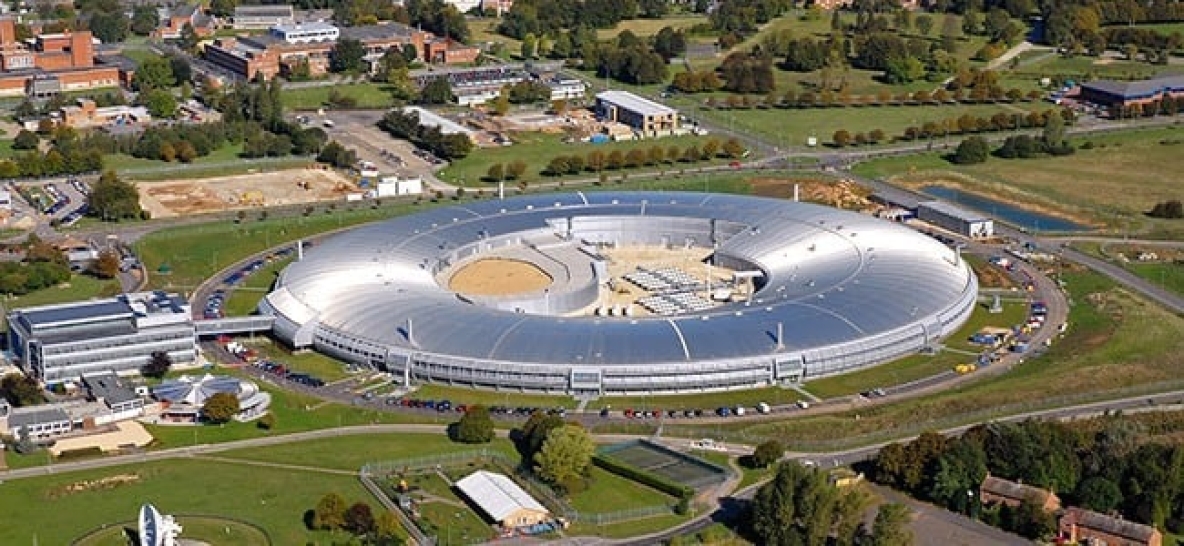

An ECE Senior Research Fellow: Dr. Gabriel Leen (pictured far left) and a UL spinout company: PolyPico Technologies Ltd. are participating in various research programs to unlock the mysteries of fundamental molecular interactions in real -time. The research is being led by Prof. Allen Orville, Dr. Pierre Aller and Dr. Peter Docker from Diamond Light Source, which is the UK’s national synchrotron facility. The Diamond Light synchrotron is one of the most advanced scientific facilities in the world and accelerates electrons to near light speeds so that they give off light 10 billion times brighter than the sun. This light is then manipulated and used to investigate a variety of materials/processes at a molecular level.
One of the programs of research which Dr. Leen and PolyPico Technologies Ltd. is involved in at Diamond Light Source is to examine turn over in Beta lactamase proteins which is responsible for bacteria developing antibiotic resistance and therefore of significant importance to future world health. The UL Spinout companies technology allows for diffraction data to be collected before and after turnover and consequently enables a deeper understanding of the underling processes. See recent publication: Pico-litre Sample Introduction and Acoustic Levitation Systems for Time Resolved Protein Crystallography Experiments at XFELS. July 2017, Sensors and Transducers 214(7):39-45
Another program of research which Dr. Leen and PolyPico Technologies Ltd. is involved in is to explore a protein known as photosystem II. This protein is responsible for photosynthesis. Until this protein is exposed to light the protein remains in its dark state and the emerging plant seedling shoot grows upwards. When the plant growth brakes through the soil turnover is triggered in the protein by daylight and the plant knows to grow leaves flowers and bud. The PolyPico system will be key in future investigations of this turnover mechanism leading to a greater understanding of the process of photosynthesis.
Part of this program of research involved running experiments using the Linac Coherent Light Source (LCLS) at Stanford Linear Accelerator Center (SLAC), Menlo Park, California. SLAC is the the longest linear accelerator in the world measuring 3.2 kilometers (2 miles) in length.
Further programs of research and experiments of various fundamental processes are planned at the European XFEL, which is the world’s largest X-ray laser and generates ultrashort X-ray flashes—27 000 times per second with a brilliance that is a billion times higher than that of the best conventional X-ray radiation sources. These experiments will be using the UL spin-out company’s technology to introduce extremely precisely timed microscopic pico-litre (10-12 of a litre) volumes of material into the x-ray beam line.